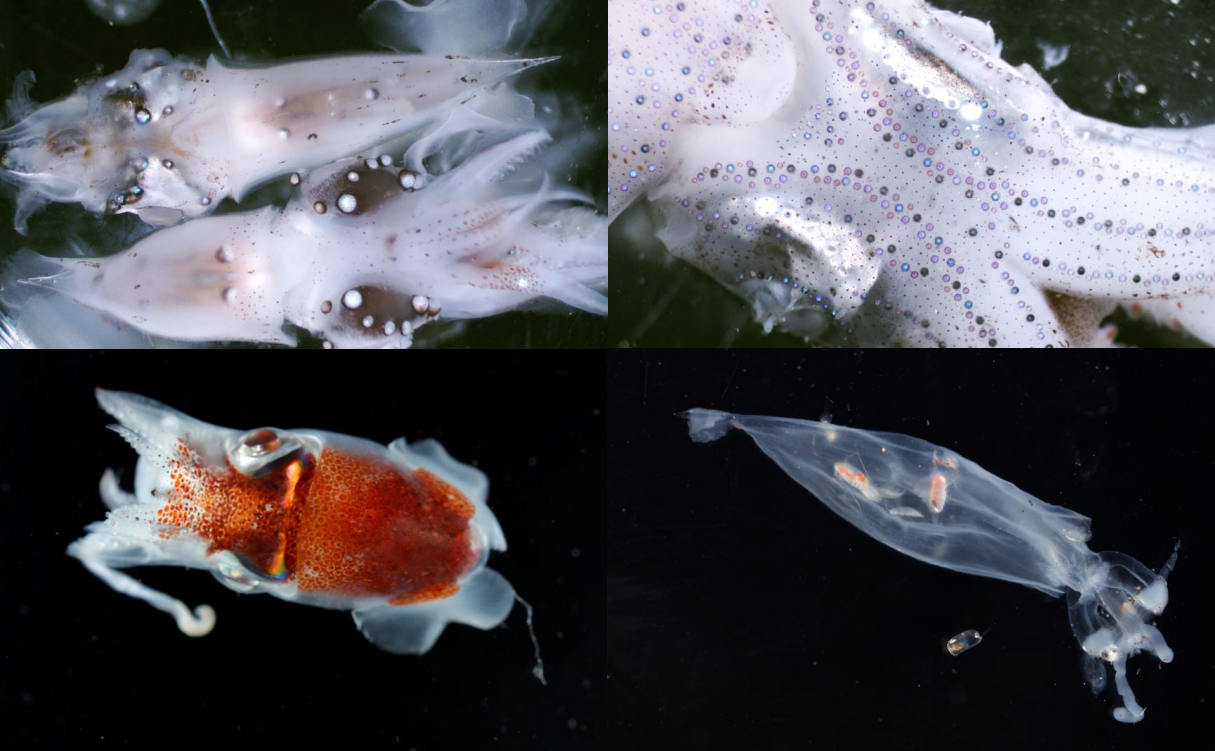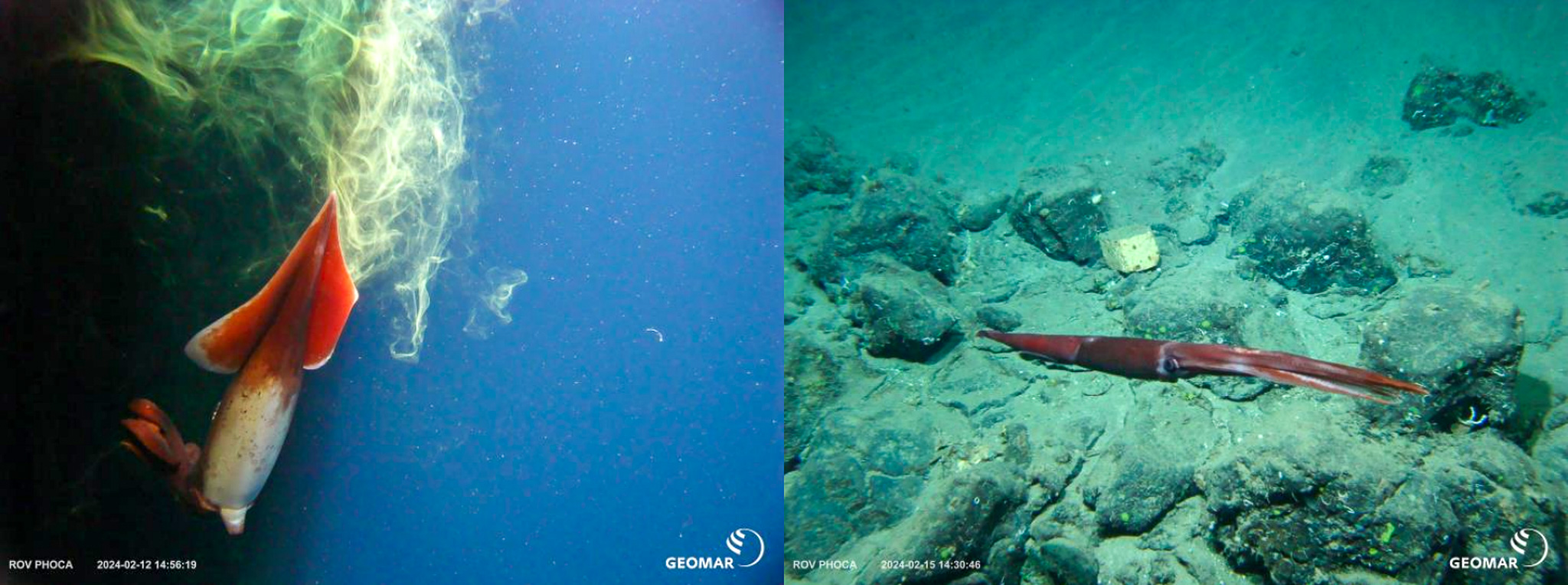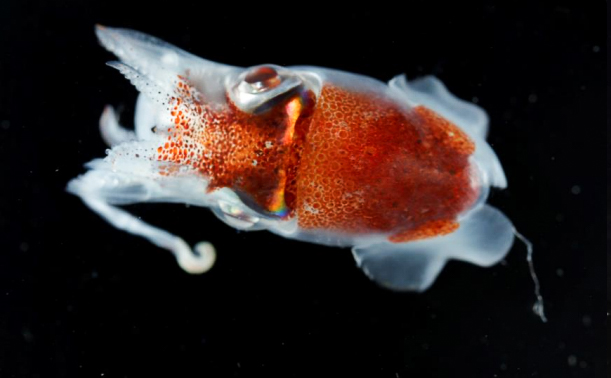The last blog posts showed you scary-looking deep-sea fishes, gelatinous beauties and mesmerizing microscopic organisms. Another frequent organism group we captured during MSM126 which did not enjoy a spotlight so far are the cephalopods. Cephalopods are molluscs – like snails or mussels – and are marine inhabitants which often occupy high trophic positions in food webs. During our cruise, we encountered cephalopods such as squids, octopods or cuttlefish with our camera systems and also caught them frequently with our net gear.
On board we deployed a multitude of net types. Nets with large openings like the IKMT are good to catch bigger fauna whereas smaller and finer nets such as the Ring or Bongo Net are well-equipped to capture more delicate fauna such as jellyfishes or tunicates. Usually we caught cephalopods in their very early life stages. Like fish and other marine organisms, the juvenile appearance of cephalopods can greatly differ from how they look as grown adults. With sometimes only a few millimeters in size and often delicate bodies, the identification of those animals was a challenging task. An abundant cephalopod family we captured was the Cranchiidae, or glass squids, which can be easily overlooked in our hauls due to their translucence. With their stalked eyes and long transparent bodies they awed us with their alienish appearance. We also caught multiple members of the superfamily Enoploteuthidae which include species with beautiful light organ arrangements all across their bodies.

Besides our net hauls, we also observed living squids and octopods in their natural habitat with our camera systems. Especially our ROV PHOCA captured mesmerizing moments with multiple larger cephalopods. On one occasion, an ommastrephid squid (also known as “flying squid”) was curious about the big, robotic intruder and inspected the sampling gear of our ROV, also leaving a dense cloud of ink. In another dive, we encountered a cf. Pholidoteuthis close to the seafloor.

Not only nets and cameras captured cephalopods during the MSM126, but also the most unexpected gear: our CTD-water-sampler. An uncommon catching gear retrieved an uncommon squid: the elusive Narrowteuthis cf. nesisi. Only two specimens have been caught so far world-wide – so we were surely astonished to have caught such a rare animal with the least imaginable catching gear for cephalopods.
With the samples and observations we gathered during MSM126 we hope to learn more about the diversity and the role of cephalopods around Madeira.
Sophie V. Schindler & Henk-Jan Hoving
